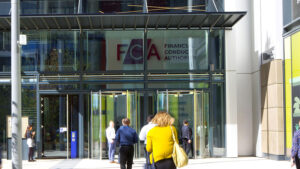By Nigel Jenkins, a managing director at Payden & Rygel
There are about 28,000 bonds in the global aggregate index. That’s just investment grade bonds. Investors have tens of trillions of dollars of fixed income securities to choose from. It’s a big diverse marketplace which I think should form a significant part of people’s portfolios.
When it comes to the performance of global bonds, 2023 is proving to be a stronger year than 2022. This results from yields having risen substantially, producing greater running yields and less potential for further capital losses. We believe we could see stronger returns later in the year. Looking at the global investment grade benchmark that is hedged back to dollars, returns are still behind cash to this point, 2023, but some recovery could well occur before year end.
Global or US?
The most important medium to long-term case for preferring global bonds over holding solely US bonds, is diversification. Over the long term, the US investment-grade aggregate benchmark has exhibited a volatility of around 3.6%. A similar global benchmark has shown a long-term volatility of slightly below 3%. It is less volatile because of diversification – also because the US is one of the more volatile markets. This combination reduces its volatility by around a fifth.
See also: High-yield bonds: Buy or buyer beware?
Expected returns are about the same over the long term on a currency-hedged basis. There are periods where investors get more return from global bonds, and other periods where investors get more return from US bonds. Looking forward, it is hard to say over a 10- or 15-year period that there would be much expected difference at all in total returns. But we would expect the volatility to remain lower on a global index than a US-only index. Diversification is the main benefit.
What are the risks?
Fundamentally, risks come from two sources. First, the US Federal Reserve and other central banks globally have been very aggressive in raising interest rates. It has been a global phenomenon. The Fed has raised by 5.25% in 11 moves, while the European Central Bank has raised by 4% in a smaller number of moves. Everywhere around the world has seen a rise in interest rates except Japan and China.
I don’t believe we have ever seen interest rate increases of anything like this magnitude, which have not been followed by a significant economic slowdown. However, that has not happened in the US yet. We think the lags are a bit longer this time because of Covid and other factors, but it is going to hit sooner or later. That is a risk to the economic downside coming after the most aggressive monetary policy tightening in 40 years.
See also: Quilter MPS ups fixed income allocation and exits UBAM impact fund due to breach
A big support for US and global bonds over the last 25 years has been inflation being anchored at very, very low rates. All the talk was about disinflation. There was 2% plus or minus 1% across the piste, and mostly it was minus 1% relative to the 2% global targets.
Inflation doesn’t need to be that much higher, going forward, for it to be quite a shock. If we have 3% inflation on average for the next 15 years, compared to 2% for the last 15, that is a big cumulative change. That would generally mean the prevailing level of interest rates should be a fair bit higher than they otherwise would have been.
Governments or corporates?
We are focused more on governments than corporates, at least to a greater extent than normal. In terms of where corporate bonds are relative to US treasuries, the amount of yield premium an investor will receive above government bonds is now about the average for the last ten years at 120 basis points. This is pretty middle-of-the-road, especially since we might be entering into a period of slower growth and greater uncertainty. That does not mean we don’t own any corporates. There are still selected pockets of value and we focus more on investment grade rather than high yield. It does mean that we have less relative to benchmarks than we had earlier this year or this time last year.
See also: Grade expectations: Will investors return to UK corporate bonds?
In terms of the nationality, The US is quite close to the top of the list now, particularly US treasuries. TIPs, or inflation-linked treasuries, are one particular pocket of value. Investors receive a 2.5% yield (as at 6 Oct) on a 10-year inflation-protected security backed by the US Treasury.
Conclusion
There have been 10-year periods in the past where bonds have outperformed equities. We haven’t seen one for some time, but who knows – we may over the next 10-plus years. The global bond markets are very deep, generally very liquid markets with decent return potential. Global bonds can balance the riskier equities that may be in peoples’ portfolios. Last year was the worst for fixed income in 40 years. But from here, there is a lot to be said for fixed income investments in a diversified portfolio.







